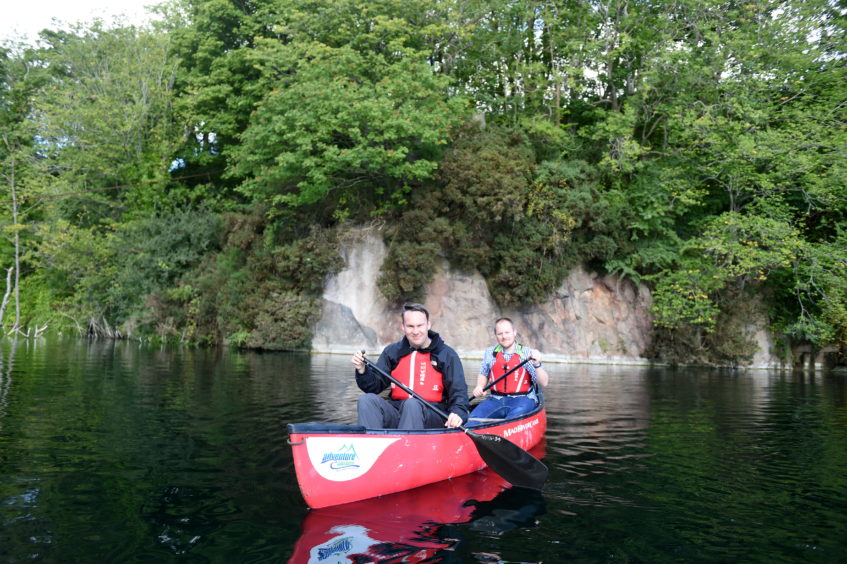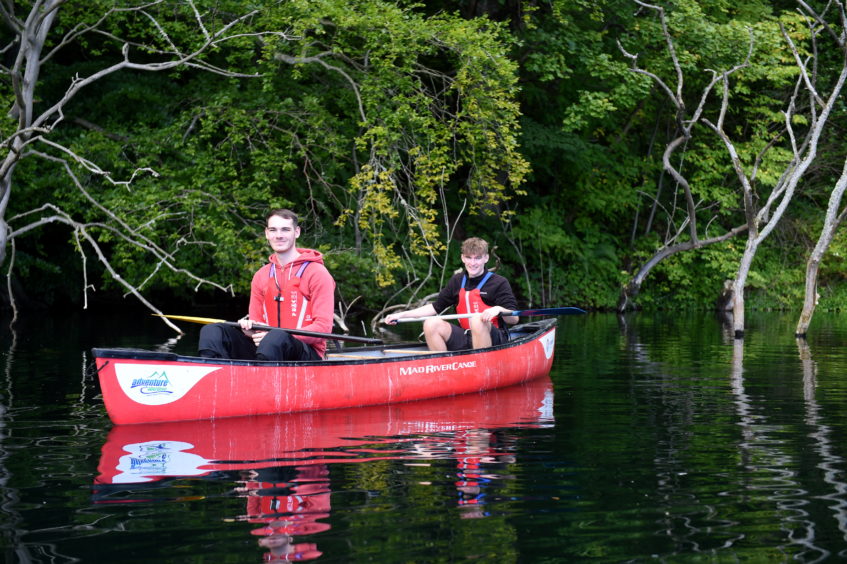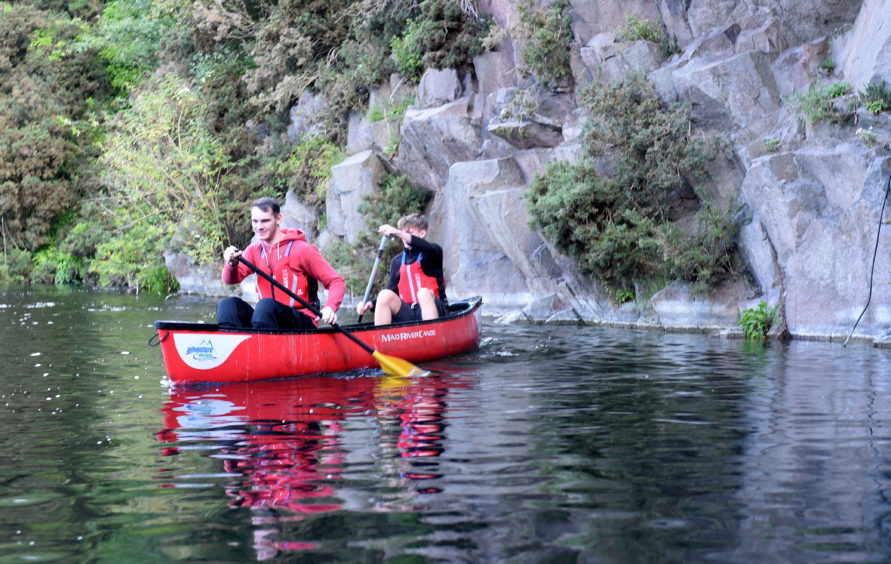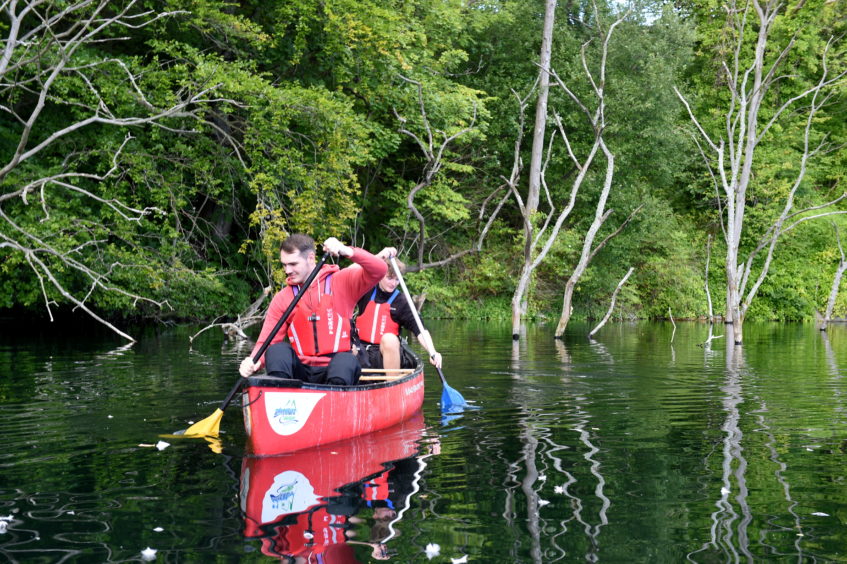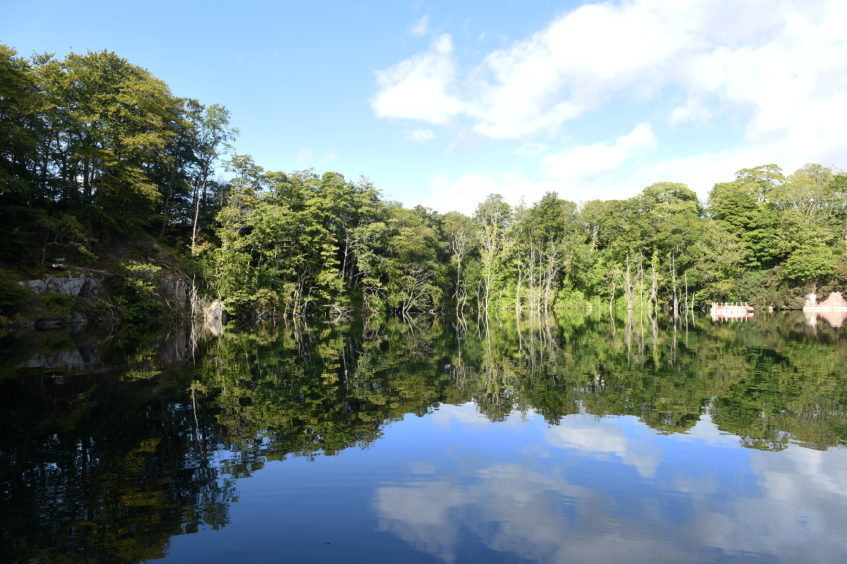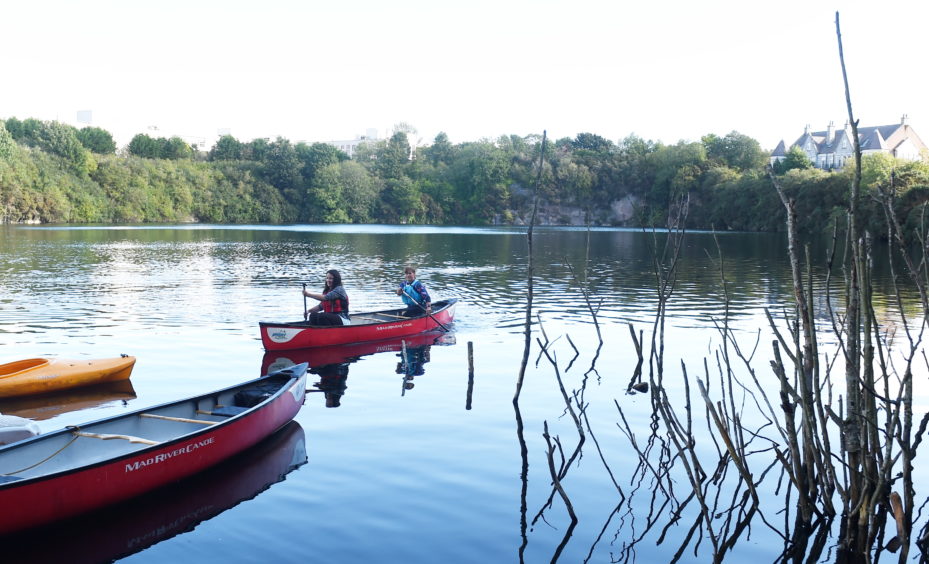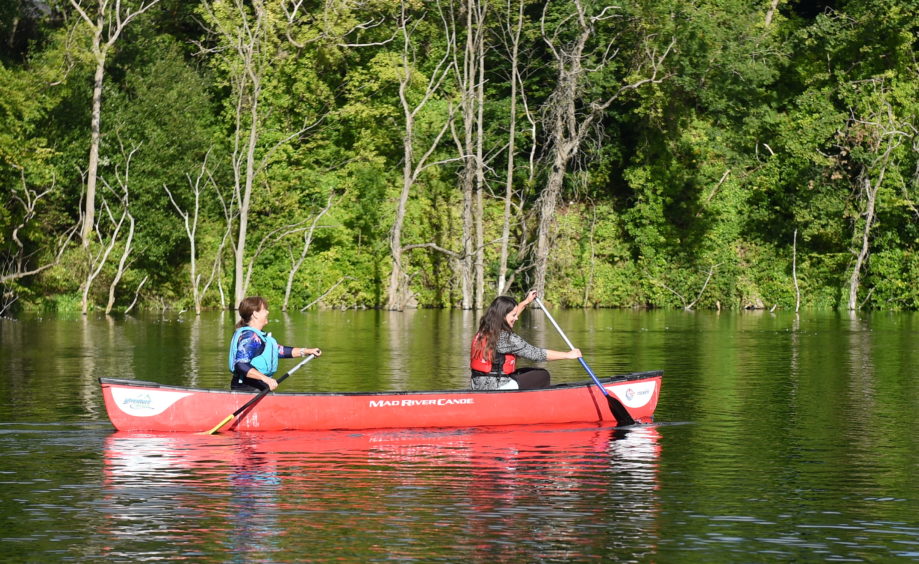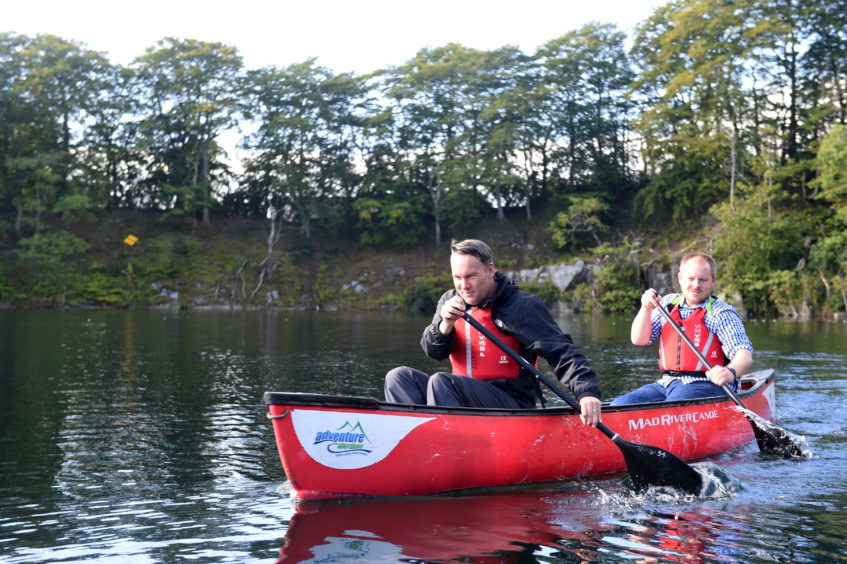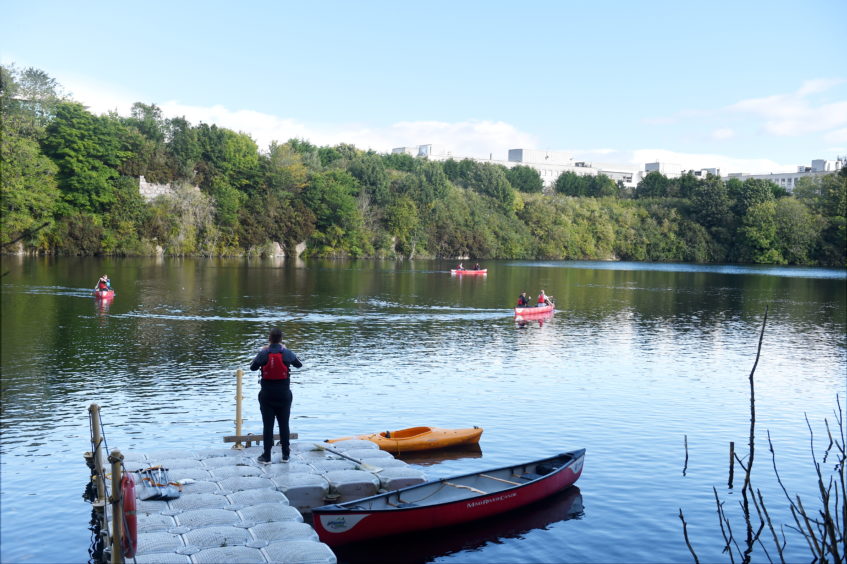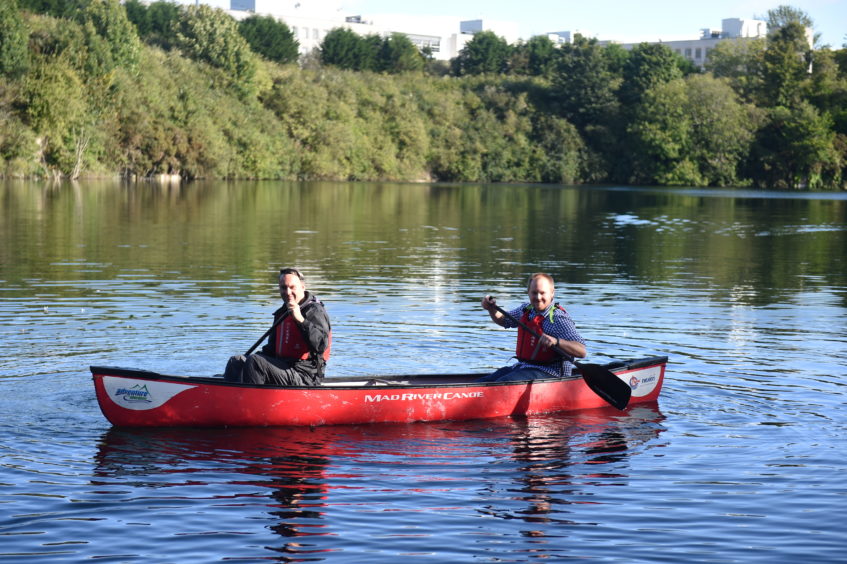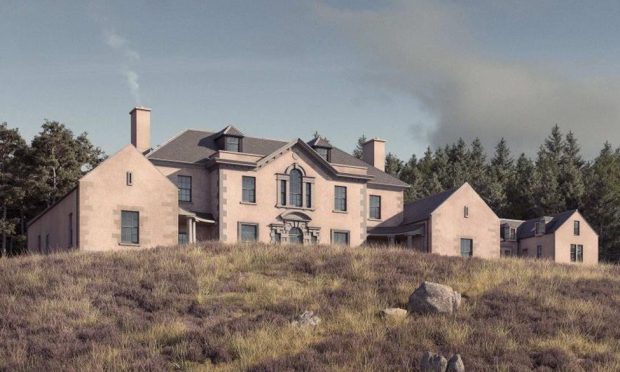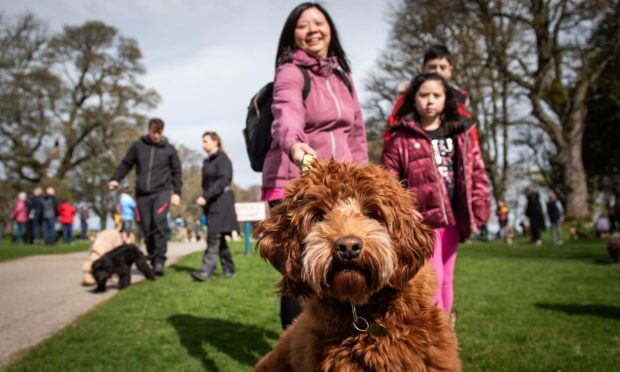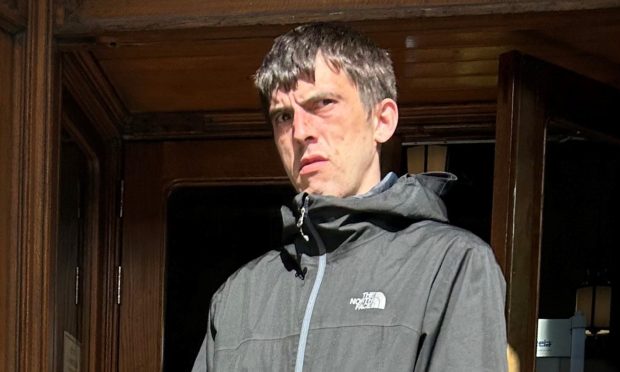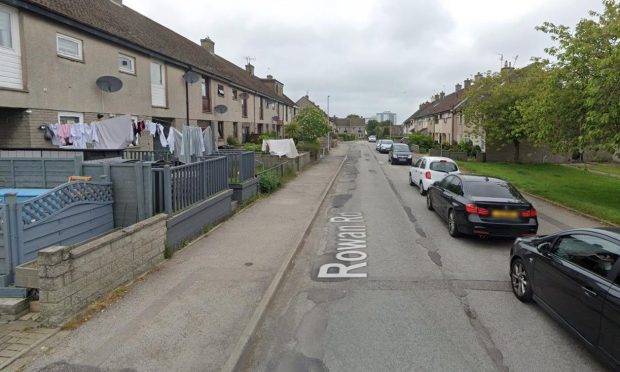A unique Aberdeen landmark will today begin a new lease of life as a water sport destination after being sealed off to the public for 50 years.
Rubislaw Quarry will be publicly accessible for the first time in decades, catering to north-east residents’ growing thirst for adventure following months in lockdown.
The historic site, which is Europe’s largest man-made hole, has filled with 460ft of water since it ceased operation.
Local charity Sport Aberdeen believes that makes it the perfect spot for water sport, and is now offering people of all ages the chance to glide across its surface in canoes.
Adventure Aberdeen, which is part of Sport Aberdeen, will run the scheme and its head of sport and active communities, Graeme Dale, revealed that all sessions this weekend have already been booked up.
Mr Dale said: “We have a good relationship with the quarry owner, Hugh Black, who has been looking at ways to utilise it.
“It seemed like a perfect mix with our outdoor adventure activities, as we had all the equipment and qualified instructors ready.
“It’s a great environment that people will want to come and see – and anyone over the age of five can do it.
“With lockdown, people are coming to the realisation that they want to get out more, and families are looking for different activities to do together.
“It has been really popular so far and we might look to put on more sessions.”
All equipment will be provided and outings will each last an hour, with people being asked to don a flotation device over comfortable outdoor clothes.
Project bosses yesterday welcomed some guests to the spot off Queen’s Road for a sneak preview.
The group didn’t encounter any problems as they paddled across the dark depths, with the surrounding trees offering ample protection from the wind.
And the novices taking part quickly got the hang of it, taking in the stunning surroundings as they drifted around its 400ft diameter.
Sidling up to the edges, they were able to see how the granite used to construct much of the city had been hewn from the ground while it was operational between 1740 and 1971.
Mr Dale, who plans to try out the activity himself tomorrow with his six-year-old son, said the organisation had the quarry water tested in a laboratory to make sure it was safe before rolling out the scheme.
And he hinted that more activities could soon be on offer at the site, given the popularity of the canoe sessions.
He said: “This is just the start.
“There are lots of water activities that you could do here, and we will be looking to see how we can introduce them into a programme.”
Hidden gem
More than six million tonnes of granite was excavated from Rubislaw Quarry across two centuries as the city famed for its association with the rock took shape.
Granite, fishing, paper and textiles were all considered the backbone to Aberdeen’s industrial base when the quarry was a noisy centre of activity between the mid 18th and late 20th centuries.
Though most commonly associated with Aberdeen, Rubislaw granite is found further afield, with Waterloo Bridge in London, the terrace of the Houses of Parliament and parts of the Forth Bridge also built from the rock.
Despite its prominent role in the cultural heritage of the Granite City, the quarry has largely fallen into disuse since its closure.
Businessman Hugh Black acquired the site in 2010 and has spent a decade devising ways of making the most of the unique landmark.
Yesterday, he welcomed the fresh move to breathe new life into the spot.
He said: “Rubislaw Quarry has been more or less neglected since it closed.
“Where offices and residential properties have been built on the former granite yards that surround it, the quarry itself has been virtually forgotten about.
“So, the opportunity for the general public to be able to access the ‘hidden gem’ of Rubislaw Quarry, with safe and supervised activity through Adventure Aberdeen, will give people a unique perspective of this iconic heritage site.”
Mr Black has recently been a prominent opponent of Canadian firm Carttera’s plans to build 245 flats on the edge of the quarry.
Earlier this year, the council’s planning committee unanimously voted down the £70 million proposals for the heritage site after 400 letters of objection were received.
The Canadian firm has since lodged an appeal with the Scottish Government, the outcome of which could be revealed later this month.
